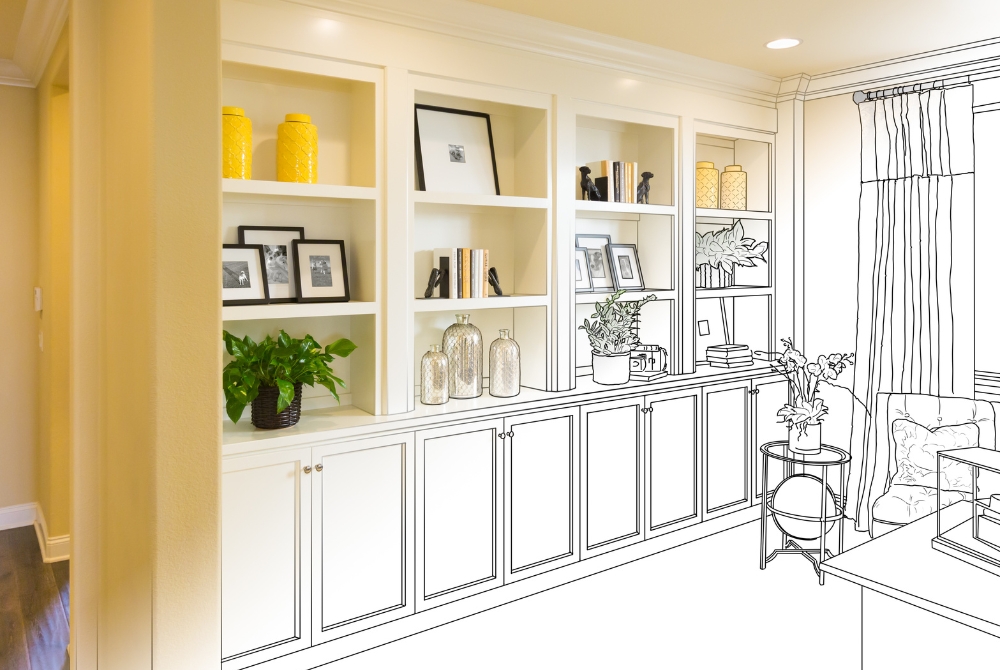Have you ever walked into someone’s home and realized that it was exactly the same layout as yours? That might come across as a funny coincidence to you, or you might attribute it to certain industry standards. Now, to raise the stakes: what if your business built your home and you were visiting the home of a former employee, built by her new construction design business? Your belief in coincidence might considerably fade; and you might become suspicious that some essential knowledge of your business had been copied improperly. But is that suspicion enough to make a successful trade dress or trade secret intellectual property claim? We see this situation playing out in North Carolina, where a custom cabinetry business in Charlotte has pursued claims against a former employee.
Design Gaps Goes after Former Employee
The custom cabinetry plaintiff, Design Gaps, Inc., has been questioning the activities of former employee Jocelyn Hall, who now works for competitor Peters Custom Homes, Inc. (doing business as Emerald & Oak Design) under her own design business, Hall Interiors, LLC. That sounds like many fingers in many pies, but the essence of the case brought by Design Gaps is fairly simple: they believe that Hall Interiors is using technical drawings from Design Gaps to construct “substantially similar” interiors in Emerald & Oak Design homes.
Does this pose a legal problem for Hall? According to Design Gaps, she signed an agreement containing non-compete and non-solicitation clauses when she started working for them in 2018. These agreements specified a timeline of not competing with Design Gaps during her employment and for two years after termination within their region of South and North Carolina.
Hall left in mid-2021 and, according to the case text, immediately began working for competitor Emerald Oak & Design. While this may constitute some kind of legal tangle for Hall and Design Gaps, does this give Design Gaps intellectual property claims against her and her new employer?
Design Gaps seems to think so. They articulated quite a few in their Complaint filed in the US District Court for the Western District of North Carolina:
- Misappropriation of Trade Secrets under the North Carolina Trade Secrets Protection Act and the federal Defend Trade Secrets
- False Advertising and False Designation of Origin under the federal Lanham Act
- Unfair and Deceptive Trade Practices
On top of these IP claims, they addressed other claims of fraud, embezzlement, breach of fiduciary duty, and breach of contract.
What Would Design Gaps Need to Prove These?
In its arguments, Design Gaps strived to prove two major claims: misappropriation of trade secrets and false advertising/designation of origin. What would be necessary for these to succeed in a court of law?
Trade Secret Intellectual Property Claim
The tenets for trade secrets are very specific. In order to validate a trade secret claim, you must:
- Define knowledge or a process that is unique and essential to your business alone
- Demonstrate notable efforts to protect this secret
- Show that another party intentionally used this trade secret without your permission
Note that the general knowledge built from years of experience in a trade, while valuable, does not constitute a trade secret. A plumber who knows how to repair a broken pipe does not possess a trade secret. That information is generally accessible to businesses in the same industry. However, if a plumber were to create a special coating for pipes that makes them impervious to rust and breakage – and that makes their business enviable in commerce – now we are getting closer to a trade secret.
Lanham Act Claims
For the claims of False Advertising and False Designation of Origin based on the Lanham Act, Design Gaps took a trade dress angle. In order to substantiate these claims, they would have to show:
- The cabinet designs created by Hall Interiors and/or Emerald & Oak Design were likely to cause confusion or to deceive consumers into believing that the cabinets were made by Design Gaps.
- The trade dress elements of the cabinet designs claimed by Design Gaps were nonfunctional – that is, they cannot claim ownership of essential parts of cabinet-making, like having a handle on the door. All cabinet makers need to be able to put handles on their doors without worry of infringement claims.
Gaps in the Arguments of Design Gaps
Ultimately, Design Gaps did not succeed in any of its claims in federal court. But the court dismissed them for a different reason than you might expect. The court basically said: “You are not being specific enough.”
The court questioned both the trade secret and the Lanham Act trade dress claims. For trade secrets, the court could not discern what their trade secret was or how they acted to protect it. And, regarding trade dress, they failed to see how this was not simply a copyright infringement claim.
The door did not entirely close there. The court advised Design Gaps to clean up their claims and take them to state court – but the federal court had washed its hands of it.
If you have wondered about the merits of hiring a lawyer to review and advance your intellectual property cases, look no further than this case. Design Gaps spent time and money filing a complaint that could have used further scrutiny and clarification before it saw the light of day. Take heed.
